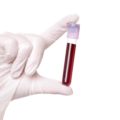
If your child is suffering from classic allergy symptoms, such as wheezing, coughing, a runny nose, itching, swelling, an upset stomach or hives, then you may want to consider getting him or her tested to find out exactly what allergens are causing the problem. This way you can avoid the allergen as a family and help your child to lead a healthier and more active life.
Allergy testing for children can seem like a stressful process, especially for parents who haven't been tested themselves. However, there's really no cause for worry. Most allergy tests are done through the skin prick procedure, wherein a doctor administers various allergens into the child's skin through tiny pinpricks in their arm or back. If your child is anxious about the pinpricks, you can try using a plastic toothpick to press gently on the skin and show them what the procedure will feel like.
If your child is allergic to a substance, an itchy, red, raised bump called a "wheal" will form around the pinprick within 15 minutes of the test being administered. The larger the wheal is, the more severe your child's allergy. You might consider bringing a book or magazine to read aloud to your child while you wait. Some children enjoy having pictures taken of their skin while they wait, and others just want a hand to hold.
Once the 15 minutes is over, the doctor will come in and examine the results. Allergy tests do yield some false negatives and false positives, but are 90 percent accurate. There is a risk of anaphylactic reactions during an allergy test, but your allergist will be actively monitoring your child and is fully prepared to handle such a reaction.
If you have any questions about allergy solutions for your child, visit Allergy Be Gone for answers.









